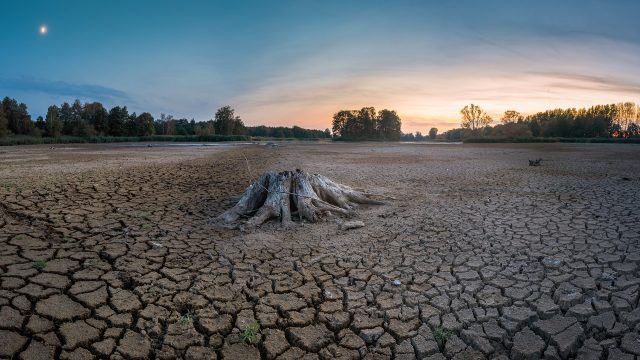
May rainfall offers a temporary break from drought, but experts warn the heatwave and structural water issues could reignite crisis conditions
Rome – June 17, 2025 — As the world observes the UN’s World Day to Combat Desertification and Drought, Italy stands at a climatic crossroads. The country has seen welcome rainfall over the past month, easing months of water stress and offering a short-term reprieve from drought. But this period of relief is shadowed by a harsh reality: rising summer temperatures and long-standing vulnerabilities threaten to undo recent gains. Thanks to an unusually wet May—particularly in the northern regions—Italy’s water reserves have bounced back. The meteorological drought that gripped much of the country has mostly receded. “We can now say that meteorological drought—essentially, a lack of rainfall—has subsided over most of the Italian territory,” announced Fondazione CIMA, one of the country’s key climate monitoring bodies. The data comes from a decade-long monitoring effort by Lab24, in partnership with Fondazione CIMA, which tracks soil moisture, snowpack levels, and temperature trends. Their latest reports point to a healthier hydrological landscape as Italy enters the critical summer season. Northern provinces, in particular, show improved soil saturation and river levels.
From a Cool Spring to a Scorching Summer
However, this fragile equilibrium may already be shifting. After a cooler-than-average May—especially in the North—Italy is now experiencing its first major heatwave of summer 2025. “The cooling was temporary,” explains Francesco Avanzi, a hydrologist and snow expert with CIMA. “Now we are seeing a significant spike in temperatures, and without new rainfall, we risk losing much of the soil moisture we’ve recently regained.” Forecasts suggest this heatwave could stretch into late June. The impact is expected to be particularly acute in agricultural areas still recovering from the stress of the 2023 and 2024 droughts. Crop systems and shallow water reserves are among the first to suffer when temperatures rise sharply without accompanying precipitation.
Persistent Challenges in the South
Despite the national improvement, conditions in the South remain precarious. Soil moisture data shows lingering drought conditions in parts of Sicily and southern mainland Italy. According to ISPRA (the Italian Institute for Environmental Protection and Research), these critical zones reflect “residual effects” of the extreme drought experienced in previous years. Snowmelt, another vital source of water for rivers and reservoirs, resumed its typical pace in June after a brief May slowdown. But as snow cover retreats to higher altitudes, its contribution to Italy’s water balance will diminish. This adds pressure on other sources—particularly groundwater and artificial reservoirs—just as demand peaks.
Beyond the Weather: Systemic Weaknesses
Experts emphasize that this is more than a weather story. While May’s rainfall helped alleviate immediate concerns, Italy’s long-term exposure to drought has deep roots. “The risk is not just about rain or no rain,” Avanzi notes. “It’s about how the system as a whole—reservoirs, infrastructure, governance—can absorb and respond to climate shocks.” Italy’s water infrastructure, much of it aging and underfunded, has proven vulnerable to prolonged dry spells. The agricultural sector, which consumes over half of national freshwater resources, has struggled to adapt irrigation practices to climate extremes. And cities remain exposed to sudden shortages, especially in the South where water theft and leaks exacerbate the problem.
A European Priority?
As Denmark prepares to take over the rotating EU Council presidency in July, water security may finally receive the attention it deserves. The Mediterranean region is increasingly seen as a frontline in Europe’s battle with climate instability. Italy’s experience—oscillating between floods and droughts—serves as a warning to other southern states. The World Day to Combat Desertification and Drought is thus not just symbolic—it is a call to action. Italy’s temporary reprieve from water stress highlights both the urgency and the opportunity to build a more resilient future. As summer 2025 unfolds, the country remains in a delicate balance. Without sustained rainfall and significant policy reform, the progress of recent weeks may prove as fleeting as a passing storm.



 Subscribe
Subscribe